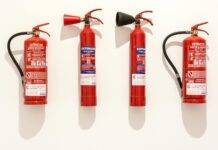
Scaffolding Safety Quiz Multiple Choice Questions and Answers
Scaffolding Safety Quiz : Scaffolding is an essential tool in the construction industry, providing a temporary platform for workers to perform tasks at heights. Ensuring the safety of those working on scaffolds is of paramount importance. To gauge your knowledge of scaffolding safety, let’s dive into a quiz that covers key concepts, regulations, and best practices.
Introduction to Scaffolding Safety
Understanding the Importance of Scaffolding Safety
Scaffolding provides a sturdy platform for workers to perform tasks at heights, but without proper safety measures, it can become a potential hazard. Safety should be the top priority for anyone working on or around scaffolds.
Common Hazards Associated with Scaffolding
Falls, collapsing structures, electrocution, and falling objects are some of the common hazards linked to scaffolding. Understanding these risks is crucial for effective accident prevention.
Scaffolding Regulations and Standards
OSHA Guidelines for Scaffolding Safety
The Occupational Safety and Health Administration (OSHA) has established comprehensive guidelines for scaffolding safety. These regulations outline requirements for scaffold construction, access, use, and training.
ANSI/ASSE A10.8 Standard
The American National Standards Institute (ANSI) and the American Society of Safety Engineers (ASSE) have jointly developed the A10.8 Standard. This standard covers the design, construction, and use of scaffolds, providing industry professionals with a valuable resource.
Types of Scaffolding
Supported Scaffolding
Supported scaffolding relies on a solid structure for support. It’s commonly used for various construction projects and offers stability for workers.
Suspended Scaffolding
Suspended scaffolding is suspended by ropes or other means from an overhead structure. This type of scaffolding is ideal for tasks that require access to different levels of a building’s exterior.
Aerial Lifts vs. Scaffolding
Aerial lifts and scaffolding serve similar purposes but have distinct differences. Understanding these differences helps in choosing the appropriate equipment for a specific job.
Components of Scaffolding
Standards and Verticals
Standards are the vertical tubes that bear the weight of the scaffold. They are the primary load-bearing components.
Ledgers and Horizontals
Ledgers connect standards horizontally and provide lateral support, contributing to the scaffold’s stability.
Diagonals and Braces
Diagonals and braces add rigidity to the scaffold structure, reducing sway and enhancing overall safety.
Inspecting Scaffolds
Pre-Work Inspection
Before starting work, a thorough inspection of the scaffold is necessary to identify any defects or issues that might compromise safety.
Daily Inspection Checklist
A daily inspection checklist helps workers assess the scaffold’s condition and ensures that it remains safe to use throughout the workday.
Safe Scaffolding Practices
Proper Assembly and Dismantling
Scaffold assembly and dismantling should only be carried out by trained professionals following proper procedures to avoid accidents.
Load Capacity Awareness
Understanding the scaffold’s load capacity is vital to prevent overloading, which can lead to structural failure.
Fall Protection Measures
Fall protection, including guardrails, harnesses, and safety nets, is essential to prevent falls and protect workers from injury.
Scaffolding Accidents and Prevention
Common Causes of Scaffolding Accidents
Lack of proper training, inadequate maintenance, adverse weather conditions, and negligence are some common factors contributing to scaffold accidents.
Preventing Accidents Through Training
Thorough training programs ensure that workers are equipped with the knowledge and skills to operate on scaffolds safely.
Emergency Preparedness
Responding to Scaffolding Emergencies
In the event of an accident or emergency on a scaffold, swift and organized responses are critical to minimize injuries and prevent further damage.
First Aid and Rescue Procedures
Having a well-defined plan for providing first aid and conducting rescues can make a significant difference in mitigating the impact of scaffold accidents.
Scaffolding Safety Quiz Multiple Choice Questions and Answers
Now that you’ve learned about scaffolding safety, it’s time to put your knowledge to the test. Take our quiz to assess your understanding and reinforce the importance of safe scaffold practices.
- Question: What is the primary purpose of scaffolding in construction?
- A) To provide shade for workers
- B) To transport materials between levels
- C) To create an aesthetically pleasing structure
- D) To provide a safe platform for workers to perform tasks at heights
- Question: Which organization has established comprehensive guidelines for scaffolding safety?
- A) EPA (Environmental Protection Agency)
- B) FDA (Food and Drug Administration)
- C) OSHA (Occupational Safety and Health Administration)
- D) NHTSA (National Highway Traffic Safety Administration)
- Question: What should workers do before starting work on a scaffold?
- A) Wear any type of footwear
- B) Inspect the scaffold for defects
- C) Share tools and equipment with colleagues
- D) Work without using any safety equipment
- Question: Which component of scaffolding is responsible for providing lateral support and stability?
- A) Standards
- B) Ledgers
- C) Diagonals
- D) Braces
- Question: What is a crucial factor in preventing scaffold accidents?
- A) Ignoring safety guidelines B) Overloading the scaffold C) Working in isolation D) Neglecting training
Confined Space Safety Quiz – Test Your Safety Knowledge
Fire Safety Quiz : Test Your Safety Knowledge
HSE Engineer and HSE Officer Jobs : Urgent Requirement in UAE
- Question: What is the purpose of using fall protection measures on scaffolds?
- A) To keep tools and materials secure
- B) To enhance the aesthetic appearance of the scaffold
- C) To prevent workers from accessing elevated levels
- D) To prevent falls and protect workers from injury
- Question: Which type of scaffolding is suspended by ropes or other means from an overhead structure?
- A) Supported scaffolding
- B) Mobile scaffolding
- C) Suspended scaffolding
- D) Rolling scaffolding
- Question: What should workers do if they notice a defect or issue with the scaffold during their work shift?
- A) Ignore it and continue working
- B) Report it to their supervisor and wait for instructions
- C) Wait until the end of the day to report it
- D) Fix it themselves using available tools
- Question: Which organization has jointly developed the ANSI/ASSE A10.8 Standard for scaffolding design and construction?
- A) OSHA (Occupational Safety and Health Administration)
- B) NFPA (National Fire Protection Association)
- C) ANSI (American National Standards Institute) and ASSE (American Society of Safety Engineers)
- D) EPA (Environmental Protection Agency)
- Question: What should workers do in case of adverse weather conditions while working on scaffolds?
- A) Continue working as usual B) Use the scaffold as a shelter from the weather C) Seek guidance from their colleagues D) Safely descend from the scaffold and wait for improved conditions
- Question: What is the purpose of conducting a daily inspection of scaffolds?
- A) To assess the color scheme of the scaffold
- B) To ensure that the scaffold is clean and tidy
- C) To identify any defects or issues before starting work
- D) To measure the height of the scaffold
- Question: Which of the following is NOT a common hazard associated with scaffolding?
- A) Falls
- B) Collapsing structures
- C) Excessive lighting
- D) Electrocution
- Question: What is the primary purpose of ledgers in scaffolding construction?
- A) To provide support from below
- B) To connect standards horizontally and provide lateral support
- C) To secure the scaffold to the ground
- D) To add decorative elements to the scaffold
- Question: How can workers prevent scaffold accidents caused by adverse weather conditions?
- A) By continuing to work carefully despite the weather
- B) By relying on personal protective equipment alone
- C) By staying informed about weather forecasts and suspending work if conditions are unsafe
- D) By focusing on their tasks and ignoring the weather
- Question: Which type of scaffolding is commonly used for tasks that require access to different levels of a building’s exterior?
- A) Supported scaffolding B) Suspended scaffolding C) Mobile scaffolding D) Rolling scaffolding
- Question: What is the purpose of diagonals and braces in scaffolding?
- A) To provide a comfortable seating area for workers
- B) To add decorative elements to the scaffold
- C) To reduce sway and enhance the scaffold’s stability
- D) To store tools and materials
- Question: Which type of scaffolding is ideal for tasks that involve a lot of movement around a work area?
- A) Supported scaffolding
- B) Suspended scaffolding
- C) Aerial lifts
- D) Rolling scaffolding
- Question: What should workers do if they encounter a situation that goes beyond their training and experience while working on scaffolds?
- A) Ignore the situation and continue working
- B) Request assistance from a co-worker
- C) Attempt to resolve the situation independently
- D) Report the situation to their supervisor and seek guidance
- Question: What should be the top priority when working on scaffolding?
- A) Completing tasks as quickly as possible
- B) Following all safety guidelines and procedures
- C) Using the scaffold as a storage area for tools
- D) Engaging in casual conversations with colleagues
- Question: What does OSHA stand for in the context of scaffolding safety?
- A) Occupational Safety and Health Association
- B) Operating Safety and Health Administration
- C) Occupational Standards and Health Authority
- D) Occupational Safety and Health Administration
Conclusion
Scaffolding is a crucial tool in the construction industry, but its use comes with inherent risks. By adhering to strict safety guidelines, understanding the types of scaffolding, and staying vigilant, we can ensure that workers are protected and construction projects are completed successfully.
Frequently Asked Questions (FAQs)
- What is the purpose of scaffolding in construction? Scaffolding provides a temporary platform for workers to perform tasks at heights, facilitating construction and maintenance work.
- Why is scaffolding safety important? Scaffolding safety is crucial to prevent accidents, injuries, and fatalities among workers working at elevated levels.
- How often should scaffolds be inspected? Scaffolds should be inspected before each work shift and after any alterations to ensure their structural integrity.
- What should I do in case of a scaffold emergency? In case of a scaffold emergency, immediately alert authorities, provide first aid if possible, and follow established rescue procedures.

























you are the best HSE teacher.
Thank you sir.
Thank you too.
good job how can i download it
Good job
Dear Sir,
You are doing a great job, and your website is very helping for us.
I really appreciated to you for this help.
Allah Tallah may give you long life with good health, happiness, and succeed you in your life always. Ameen.
Thanks & Regards,
Zeeshan Gull